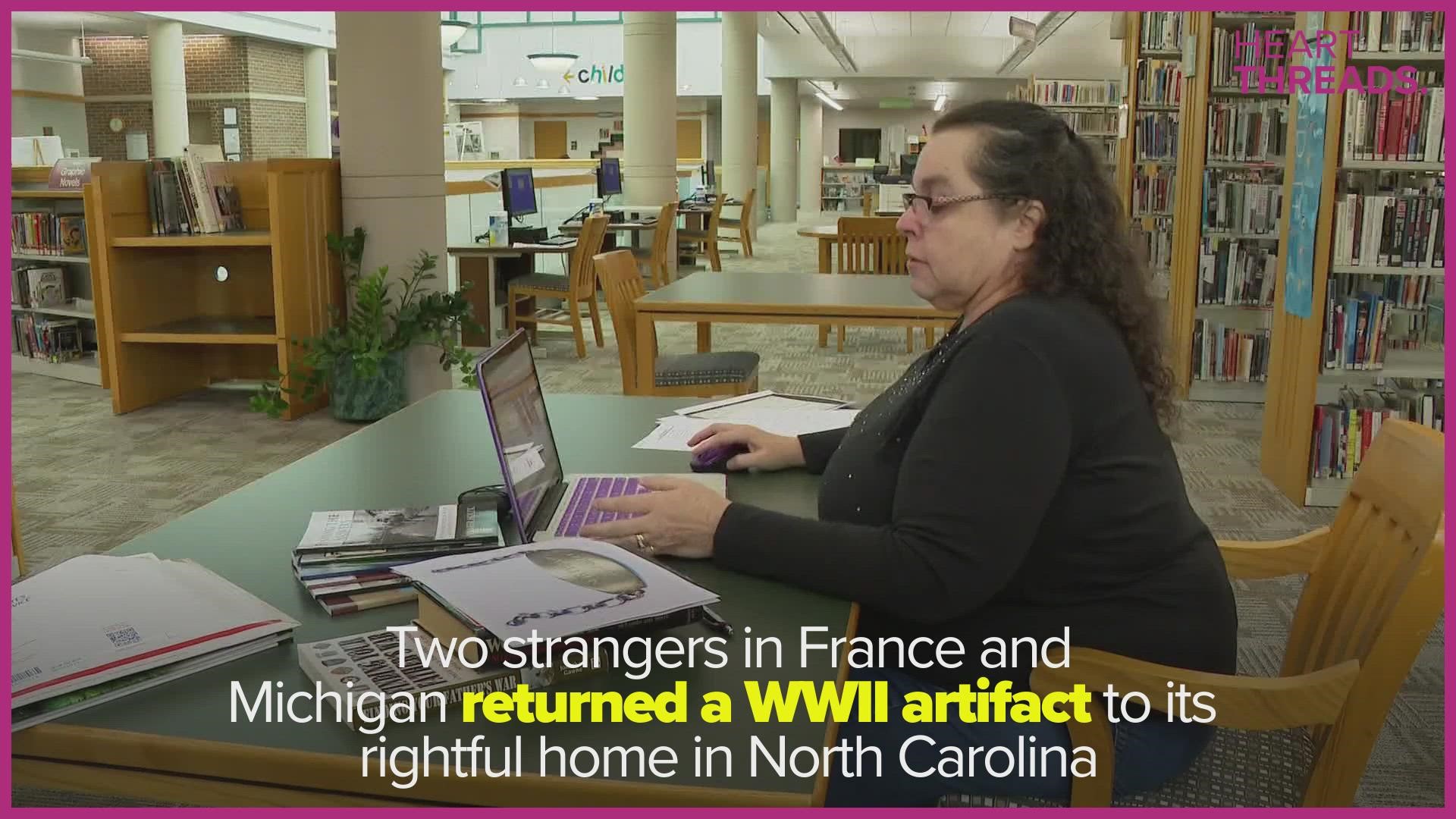RANVILLE, France — More than 20 British World War II veterans gathered on Sunday near Pegasus Bridge, one of the first sites liberated by Allied forces from Nazi Germany's control, as part of commemorations honoring the nearly 160,000 troops from Britain, the United States, Canada and other nations who landed in Normandy on June 6, 1944.
Veterans, their families and French and international visitors braved the rainy weather to take part in series of events organized over the weekend and on Monday for the 78th anniversary of D-Day.
Many felt the celebrations paying tribute to those who brought peace and freedom on the continent, take a special meaning this year — as war is raging again in Europe since Russia’s invasion of Ukraine on Feb. 24.
This year's D-Day anniversary also comes after two successive years of the COVID-19 pandemic restricted or deterred visitors from coming.
Peter Smoothy, 97, served in the British Royal Navy and landed on the beaches of Normandy on D-Day.
“The first thing I remember are the poor lads who didn’t come back ... It’s a long time ago now, nearly 80 years ... And here we are still living,” he told The Associated Press.
“We’re thinking about all these poor lads who didn’t get off the beach that day, their last day, but they’re always in our minds.”
Welcomed by the sound of bagpipes at the Pegasus Memorial in Ranville, British veterans attended a ceremony commemorating a key operation in the first minutes of the Allied invasion of Normandy, when troops had to take control a strategically crucial bridge.
Bill Gladden, 98, took part to the D-Day British airborne operation and was later shot while defending the bridge.
“I landed on D-Day and was injured on the 18th of June ... So I was three years at the hospital,” he said.
Meanwhile, on the British side of the Channel, then 17-year-old Mary Scott was working at the communications center in Portsmouth, listening to the coded messages coming from the front line and onpassing them as part of the coordination of the operations on Utah, Omaha, Gold, Juno and Sword Beaches.
“The war was in my ears,” she recalled, describing the radio machine she was operating via levers.
“When they (communication officers) had to respond to my messages and they lifted their lever, you heard all the sounds of the men on the beaches, bombs, machine guns, men shouting, screaming.”
Scott, who will soon turn 96, said she got very “emotional” when arriving to Normandy on Saturday as part of the trip organized by the Taxi Charity for Military Veterans and was in tears when seeing the Normandy beaches.
“Suddenly I thought maybe some of those young men I spoke to... that they had died.”
The symbol is even stronger as across the Channel, Queen Elizabeth II, who served in World War II as an army driver and mechanic, is celebrating her 70 years on the throne.
“Women were involved,” Scott stressed. “I mean, I’m enormously proud to have been a minute part of Operation Overlord.”
Many visitors have come out to visit the monuments marking the key moments of the fight and show their gratitude to the soldiers. World War II history enthusiasts dressed in wartime uniforms could also be seen in jeeps and military vehicles on the small roads of Normandy.
Greg Jensen, 51, came with his 20-year-old daughter from Dallas. On Saturday, they visited the Normandy American Cemetery and Memorial, overlooking Omaha Beach.
“I took a moment to just hold the sand and you think, gosh, the blood that was spilled to give me that moment and the freedom to hold that sand," he said. "That was emotional for me.”
“I hope a lot of this younger generation is watching because we can’t forget what happened 78 years ago,” Jensen said, especially thinking of the current fighting in Ukraine.
On Monday, the Normandy American Cemetery and Memorial, home to the gravesites of 9,386 who died fighting on D-Day and in the operations that followed, will host U.S. veterans and thousands of visitors in its first major public ceremony since 2019.
On D-Day, Allied troops landed on the beaches code-named Omaha, Utah, Juno, Sword and Gold, carried by 7,000 boats. On that single day, 4,414 Allied soldiers lost their lives, 2,501 of them Americans. More than 5,000 were wounded. On the German side, several thousand were killed or wounded.

